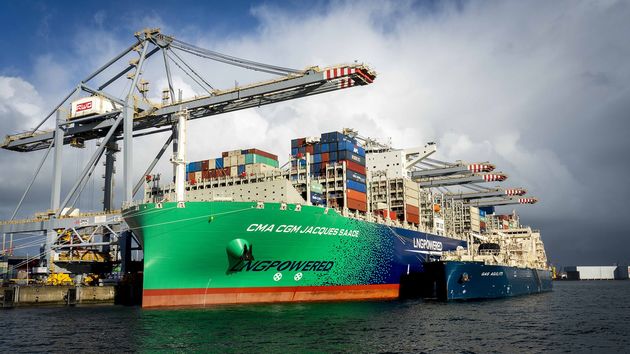
-
July 6 update of Kiel Trade Indicator slightly upbeat on global trade trend with recovery in Asia. But North Sea ship queues and falling Red Sea freight volumes hurt EU trade
-
About 4% of global cargo capacity stuck in China’s financial hub Shanghai and in Zhejiang province as the impact of the latest COVID outbreaks are just being felt
-
Improvement in US West Coast ports eases transport shortages and lowers Asia-West Coast, where they have already fallen by almost half
A slightly positive trend in global trade was observed in June this year compared with May in terms of pricing (seasonally adjusted), but disruptions in global transport such as the North Sea ship queues and a sharp decline in Red Sea freight volumes impede European trade.
This was disclosed in the latest update of the Kiel Trade Indicator on July 6, which also noted a growing trend in Russia’s ports pointing to abating trade with Europe, while trade with Asia is rebounding.
An “unusual congestion” of container ships in the North Sea continues and is on the rise, Vincent Stamer, head of Kiel Trade Indicator, said in an analysis. He said more than 2% of global cargo capacity is at a standstill there and cannot be loaded or unloaded.
Meanwhile, the queue is also growing off Shanghai and Zhejiang, with more than 4% of global cargo capacity stuck in those Chinese ports.
“An end to congestion in container shipping is currently not in sight. While long queues have also been observed off Shanghai in the past, for example, this is very unusual for the North Sea. For Germany and the EU, this primarily affects overseas trade, especially with Asia, from where, for example, consumer electronics, furniture, or textiles are delivered,” Stamer said.
In contrast, the situation in North America is improving, according to Stamer. The pandemic-induced high demand growth for consumer goods has slowed and the congestion off the Port of Los Angeles has dissolved.”
As of 7:01am on July 8, there was a total of 73,941 import containers in all terminal of the port, North America’s largest gateway, down 22% since last October 24, according to the Port of Los Angeles Import Container Dwell Report.
Of this total, 25,633 containers or 34.7% had 0-4 days dwell time, meaning they were pulled out by the importers within that period from the time they were cleared by US Customs after being discharged by vessels. This reflects a 41% drop from around 44,000 containers on October 24, 2021.
Empty boxes that have overstayed 9 days and longer as of July 8 numbered 31,299, or 42.3% of the total. But the figure is down 16% from nearly 43,000 on October 24.
Stamer said this improvement in US West Coast ports eases transport shortages. He said freight rates from Asia to the West Coast have already fallen by almost half since the beginning of the year as more empties have returned to Asia.
“Transportation costs en route from Asia to Northern Europe, on the contrary, remain six times as high, compared with two years ago,” he said.
RELATED READ: US gov’t unveils FLOW initiative to improve supply chain
On the Red Sea, the most important trade route between Europe and Asia, there are more than 20% fewer container ships on the move than would be expected under normal circumstances, the report said. The last time the gap was this large was after the outbreak of the COVID-19 pandemic two years ago.
“A decisive factor could be that the negative effects of the Shanghai lockdown are now becoming apparent due to the 40-day voyage from China to Europe. The container ship congestion in the North Sea and an increasing importance of rail transport due to the New Belt and Road Initiative may also be reducing freight volumes in the Red Sea,” Stamer said.
The Kiel Trade Indicator maintained by the Kiel Institute for the World Economy tracks the import and export trade flows of 75 countries and regions worldwide.




